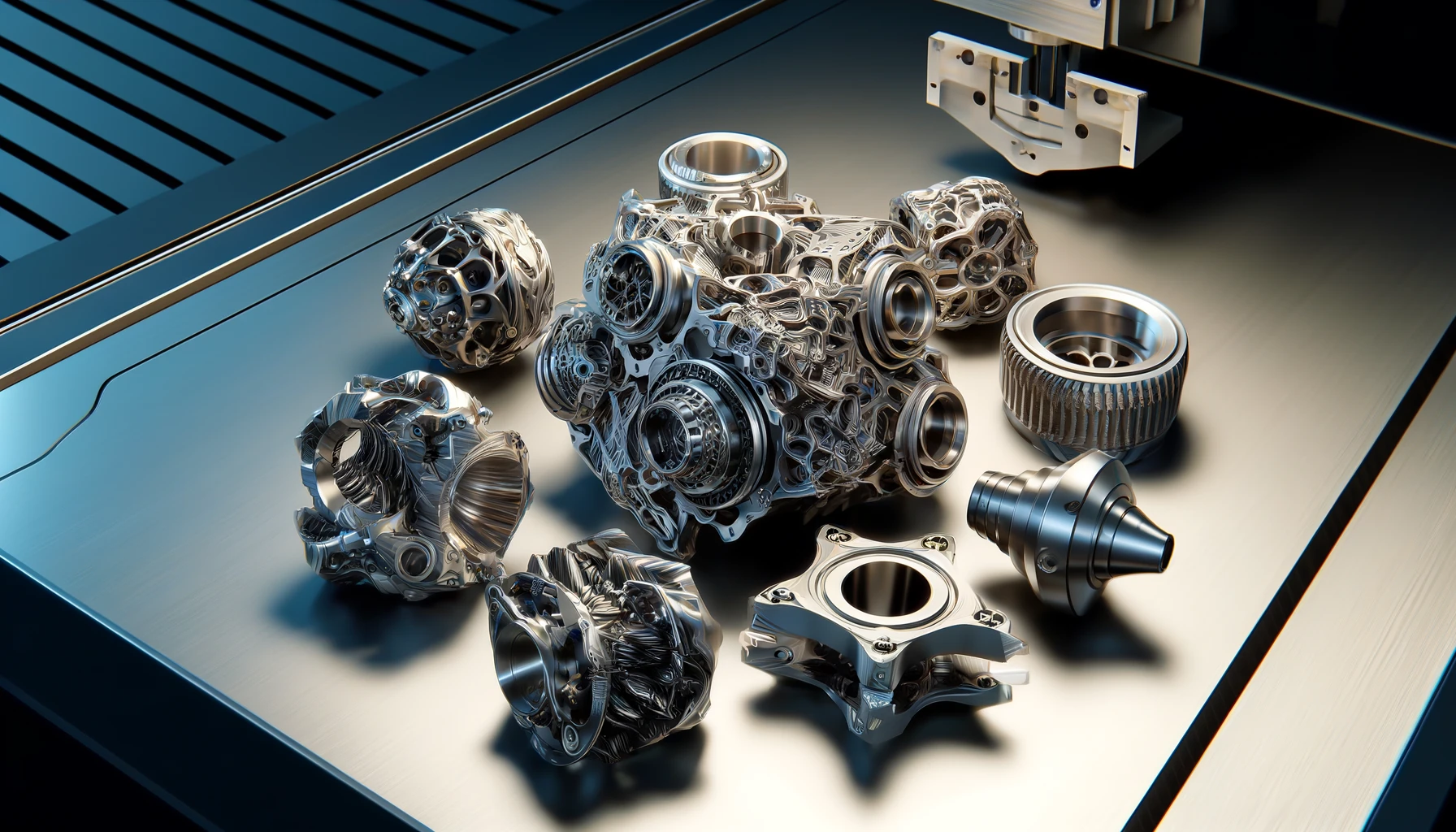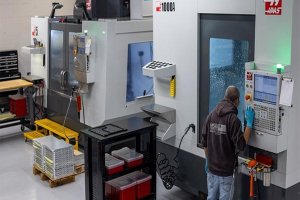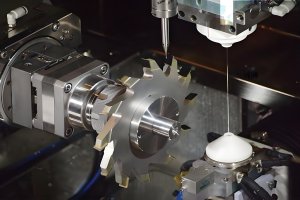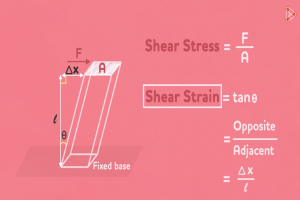What Are the Critical Considerations for Milling Titanium Effectively?
Titanium is an essential material in many industries due to its excellent properties, but these same properties also make it difficult to mill effectively. Understanding these challenges is the first step toward optimizing the CNC milling process.
Heat Management: Titanium has low thermal conductivity, causing heat to concentrate at the cutting area, which can lead to tool wear and material deformation.
Tool Wear: The hardness and abrasiveness of titanium result in rapid tool wear. This necessitates the use of specialized tools and frequent tool changes.
Work Hardening: Titanium tends to harden at the cutting surface, increasing the difficulty of subsequent passes and requiring precise control of cutting parameters.
Material Flexibility: Titanium’s elasticity can cause it to spring away from the cutting tool, leading to inaccuracies and potential tool damage.
Case Study: Aerospace Industry Applications
In the aerospace industry, titanium is frequently used for critical components due to its strength and light weight. To address the challenges of milling titanium, aerospace companies have adopted advanced cooling techniques and specialized cutting tools, which have significantly improved machining efficiency and part quality.
How Do Cutting Parameters Impact the Milling of Titanium Parts?
Optimizing cutting parameters is crucial for effective CNC milling of titanium parts. The right combination of cutting speed, feed rate, and depth of cut can dramatically improve tool life, surface finish, and overall productivity.
Cutting Speed: Lower cutting speeds are typically required to manage heat buildup and extend tool life, but speeds must be balanced to maintain productivity.
Feed Rate: Optimizing the feed rate ensures consistent cutting forces and helps prevent work hardening of the titanium surface.
Depth of Cut: The depth of cut must be carefully controlled to balance material removal rates with tool stability and surface finish quality.
Data Table: Optimal Cutting Parameters for Titanium Milling
| Parameter | Recommended Value | Effect on Tool Life | Effect on Surface Finish |
|---|---|---|---|
| Cutting Speed | 30-50 m/min | Increased | Improved |
| Feed Rate | 0.1-0.2 mm/rev | Balanced | Enhanced |
| Depth of Cut | 1-3 mm | Maximizes | Optimal |
| Coolant Usage | High Pressure | Reduces Wear | Better Cooling |
| Tool Material | Carbide, Cobalt | Longer Lifespan | Smooth Finish |
| Coating | TiAlN, TiCN | Extends Life | Reduced Friction |
What Technological Innovations Enhance CNC Milling for Titanium Parts?
Advancements in technology have significantly improved the efficiency and precision of CNC milling for titanium parts. These innovations address the material’s unique challenges and enhance overall machining performance.
High-Speed Machining (HSM): HSM involves using higher spindle speeds with lower feed rates, reducing heat buildup and extending tool life while maintaining precision.
Cryogenic Machining: This technique uses liquid nitrogen to cool the cutting area, significantly reducing thermal effects on both the tool and the workpiece. It extends tool life and improves surface quality.
Adaptive Control Systems: Real-time adjustments of cutting parameters based on feedback from the machining process help maintain optimal conditions, reducing tool wear and improving part quality.
Case Study: Medical Device Manufacturing
A medical device manufacturer adopted cryogenic machining to produce titanium components for implants. This innovation led to a 40% increase in tool life and a 30% reduction in production costs, demonstrating the significant impact of advanced milling technologies.
Why Is Tooling Selection Crucial for Milling Titanium Parts?
Choosing the right tools is essential for optimizing the milling process for titanium parts. Tool material, coating, geometry, and the use of specialized tools all play critical roles in achieving high-quality results.
Tool Material: Carbide tools are commonly used for their hardness and wear resistance, while cobalt-based tools offer excellent toughness.
Tool Coating: Coatings like Titanium Aluminum Nitride (TiAlN) and Titanium Carbon Nitride (TiCN) provide a protective layer that reduces friction and enhances tool life.
Tool Geometry: The geometry of the cutting tool, including rake angle, relief angle, and flute design, is crucial for efficient chip evacuation and reducing cutting forces.
Specialized Tools: High-performance end mills and inserts designed specifically for titanium can significantly improve machining efficiency and surface finish.
Data Table: Comparison of Tooling Options for Titanium Milling
| Tool Type | Material | Coating | Ideal Applications | Pros | Cons |
|---|---|---|---|---|---|
| End Mills | Carbide | TiAlN | Finishing, Roughing | High wear resistance | Higher initial cost |
| Inserts | Cobalt | TiCN | Heavy Cutting | Excellent toughness | More expensive |
| High-Speed Steel | HSS | None | General Use | Cost-effective | Shorter tool life |
| Diamond Coated | Carbide | Diamond | Precision Work | Exceptional durability | Very high cost |
| Ball Nose End Mill | Carbide | TiAlN | Contour Milling | Superior surface finish | Limited applications |
How Can Advanced CNC Software Improve Titanium Milling Processes?
CNC software plays a pivotal role in optimizing the milling process for titanium parts by enhancing design, simulation, and process monitoring.
CAD/CAM Integration: Integrated CAD/CAM software ensures seamless transition from design to manufacturing, optimizing tool paths and reducing machining time.
Simulation Tools: CNC simulation software helps predict potential issues before actual production, saving time and reducing material waste.
Process Monitoring: Real-time monitoring systems track tool wear, cutting forces, and other critical parameters, allowing for immediate adjustments to maintain optimal machining conditions.
Case Study: Automotive Component Production
An automotive company implemented advanced CAD/CAM software to produce complex titanium components for high-performance engines. By optimizing tool paths and utilizing real-time process monitoring, they reduced production time by 25% and significantly lowered defect rates.
How Do You Maintain Quality Control in CNC Milling of Titanium Parts?
Ensuring the highest quality in titanium parts is crucial, particularly for applications in critical industries such as aerospace and medical. Implementing robust quality control measures can prevent defects and reduce costs.
In-Process Monitoring: Automated in-process inspection systems can detect deviations in real-time, allowing for immediate corrective actions.
Post-Process Inspection: Comprehensive post-process inspections, including dimensional checks and surface finish evaluations, confirm that the final products meet all specifications.
Statistical Process Control (SPC): SPC tools monitor and control the machining process, maintaining consistency and identifying trends that may lead to quality issues.
Optimizing these critical factors allows companies to leverage CNC milling technology to produce high-quality titanium parts efficiently and cost-effectively.
Other Articles You Might Enjoy
- Why Is CNC Milling Preferred for Manufacturing Precision Titanium Parts?
Titanium is renowned for its exceptional properties, making it a preferred material for manufacturing precision parts in various industries such as aerospace, medical, and automotive.
- How Does CNC Milling Enhance the Production of Titanium Parts?
What Are the Unique Challenges of Milling Titanium? Titanium is a highly desirable material in many industries due to its exceptional strength-to-weight ratio, corrosion resistance, and biocompatibility. However, its unique…
- Precision Aluminum Machining for Aerospace: Custom CNC Services
Precision Aluminum Machining for Aerospace: Custom CNC Services In the world of manufacturing, precision aluminum machining plays a pivotal role, particularly in aerospace industries where superior precision is required. As…
- Custom CNC Machining Services for Titanium Parts: Enhancing Aerospace and Medical Industries?
Custom CNC Machining in the Aerospace and Medical Sectors In response to the steady growth of both the aerospace and medical industries, increasingly sophisticated manufacturing techniques have become a necessity.…
- Titanium Parts CNC Machining: Advancements and Applications in Medical Device Manufacturing
Titanium Parts CNC Machining in Medical Device Manufacturing As a cornerstone of medical manufacturing, the combination of Titanium parts and Computer Numerical Control (CNC) machining bring immense value to this…
- Unraveling the World of CNC Machined Plastic Parts(CNC machined plastic parts Mabel)
Modern innovations have taken traditional manufacturing methods to new heights. One such innovation that stands out is Computer Numerical Control (CNC) machining, a process used extensively in various industries from…






